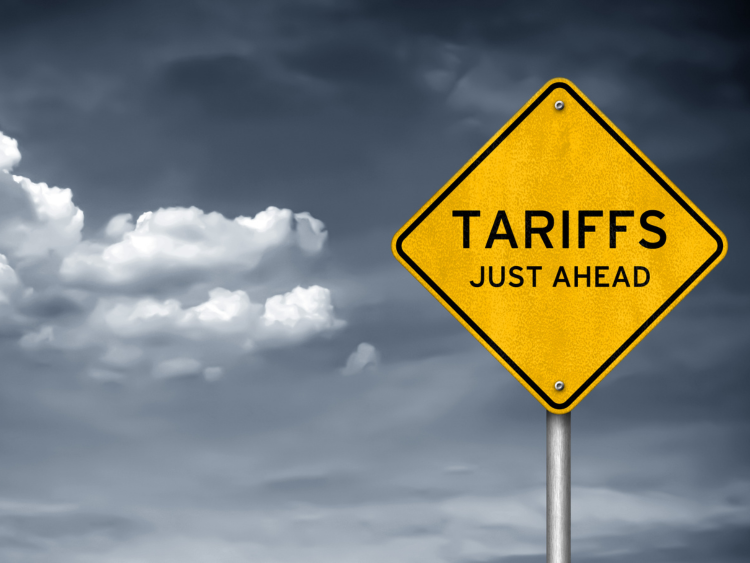Government/Policy

July 27, 2019
EU Prepares to Retaliate to Trump's Threatened Auto Tariffs
Written by Sandy Williams
The European Union has prepared a list of nearly $40 billion (€35 billion) in U.S. goods it will hit with retaliatory duties should President Trump decide to impose tariffs of 25 percent on imported cars and auto parts.
EU Trade Commissioner Cecelia Malstrom said the list of targeted goods has been raised from €20 billion to €35 billion in a proactive measure to reject any tariffs on auto shipments to the U.S.
“We will not accept any managed trade — quotas or voluntary export restraints — and if there were to be tariffs, we would have a rebalancing list; it is already basically prepared worth 35 billion euros,” Malmstrom said Tuesday at a European Parliament committee in Brussels. “I would hope we do not have to use that one.”
Last year, Trump imposed 25 percent tariffs on steel imports and 10 percent on aluminum in the name of national security; the EU responded by imposing their own 25 percent tariff on €2.8 billion of U.S goods, ranging from bourbon to Harley Davidson motorcycles.
The threat of similar tariffs on exports of automobiles and auto parts to the U.S. would be a much harder hit to the EU. The auto market to the U.S. is tenfold the market for steel and aluminum exports from the region. The EU estimates that vehicles from the EU, many of which are high-end luxury vehicles, would add 10,000 euros to the sticker price for U.S. consumers—nearly $11,000 in U.S. currency.
Earlier this year, a Commerce Department investigation concluded that imports of automobiles and parts are a threat to U.S. national security and submitted their recommendations to the president. In May, Trump delayed a decision on imposing tariffs for 180 days to allow time for negotiations between the U.S, the EU and Japan.
“United States defense and military superiority depend on the competitiveness of our automobile industry and the research and development that industry generates,” the White House said in a statement.
In an interview with Reuters, Peter Beyer, Germany’s transatlantic coordinator and member of parliament, said that after meeting with officials at the White House and U.S. Trade Representative’s office, he believes auto tariffs are likely.
“When it comes to the car tariffs, I unfortunately think they are more likely than not to be imposed in mid-November. There is quite a lot of impatience on the U.S. side. But that also requires us on the European side to be strong and unified.”
There is almost no organization, industry or lawmaker that supports using Section 232 tariffs to restrict auto and parts imports. The Center for Automotive Research estimates as many as 366,900 U.S jobs will be lost, including those at dealerships. U.S. light-duty vehicle sales would drop by 1.3 million units per year and consumers will pay thousands more for a new vehicle. And those are just the highlights of the economic impact that broad-based tariffs would trigger.
“While the trade restrictions adopted or under consideration are intended to assist U.S. workers, these policies are likely to be extremely disruptive to and negative for the U.S. economy,” concluded CAR in a February report.
One the few supporters of auto import restrictions is the United Autoworkers who say a “targeted” measure is appropriate.
“It is our hope that the Trump administration will take targeted measures to boost domestic manufacturing,” said Jennifer Kelly, director of research for the UAW, at a Commerce Department hearing last week. “We believe a comprehensive investigation into the impact of the loss of auto manufacturing and its consequences for our national security and economic well-being is long overdue.”
Trump has often stated that he “loves tariffs” and negotiating deals. Threatening to impose auto tariffs may be just a bluff to force the EU and Japan into conceding to U.S. demands. Using the tariffs as leverage may be part of larger strategy by the administration, but it has a “chilling effect” for U.S. automakers and the economy, said David Schweitert, Interim President and CEO of the Auto Alliance, an advocacy group for the auto industry. “It’s just the near-term threat of even implementing such tariffs, let alone what would happen economically should they be imposed,” said Schweitert, who noted how uncertainty regarding the tariffs is frustrating efforts by automakers to plan for the future. “The sooner it’s resolved, the better — not only for manufacturers but also for the economy.”
There are still four months left until the moratorium on auto tariffs expires in mid-November. In the meantime, waiting, opposition and uncertainty will continue.






